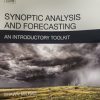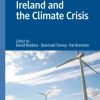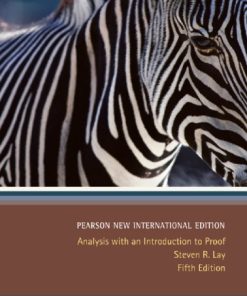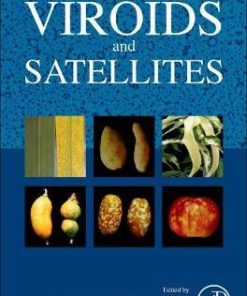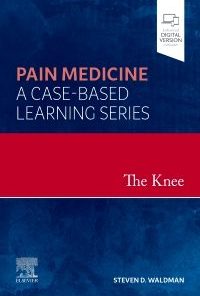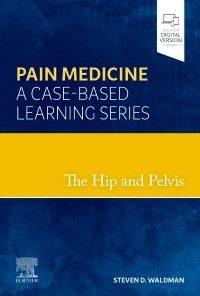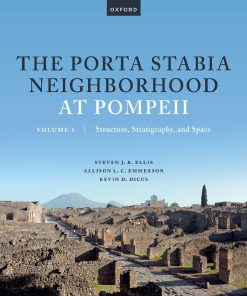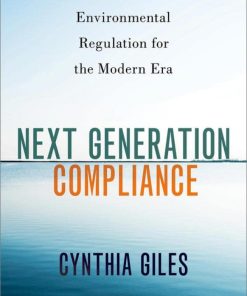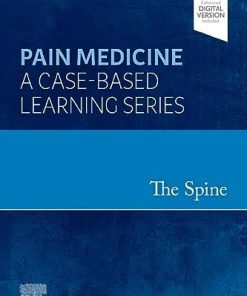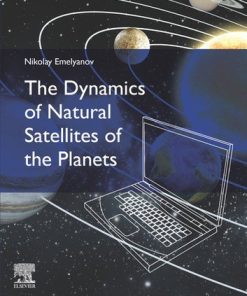(EBook PDF) The Goesr Series A New Generation of Geostationary Environmental Satellites 1st Edition by Steven Goodman, Timothy Schmit, Jaime Daniels 0128143282 9780128143285 full chapters
$50.00 Original price was: $50.00.$25.00Current price is: $25.00.
The Goes-r Series: A New Generation of Geostationary Environmental Satellites 1st Edition by Steven J. Goodman, Timothy J. Schmit, Jaime Daniels – Ebook PDF Instant Download/DeliveryISBN: 0128143282, 9780128143285
Full download The Goes-r Series: A New Generation of Geostationary Environmental Satellites 1st Edition after payment
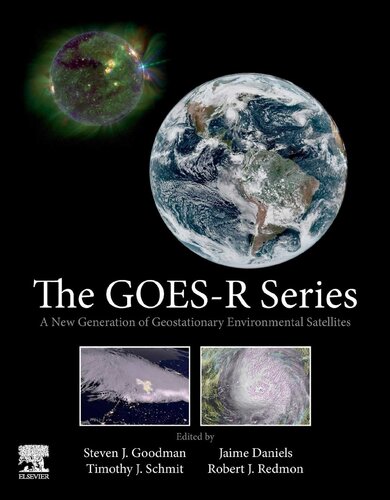
Product details:
ISBN-10 : 0128143282
ISBN-13 : 9780128143285
Author: Steven J. Goodman, Timothy J. Schmit, Jaime Daniels
The GOES-R Series: A New Generation of Geostationary Environmental Satellites introduces the reader to the most significant advance in weather technology in a generation. The world’s new constellation of geostationary operational environmental satellites (GOES) are in the midst of a drastic revolution with their greatly improved capabilities that provide orders of magnitude improvements in spatial, temporal and spectral resolution. Never before have routine observations been possible over such a wide area. Imagine satellite images over the full disk every 10 or 15 minutes and monitoring of severe storms, cyclones, fires and volcanic eruptions on the scale of minutes.
The Goes-r Series: A New Generation of Geostationary Environmental Satellites 1st Table of contents:
Chapter 1 GOES-R Series Introduction
Acknowledgments
References
Chapter 2 History of Geostationary Weather Satellites
2.1 The Early Days
2.2 Other Nations Join In
2.3 Evolving GOES
2.3.1 The GOES Sounder
2.4 Advanced Geo Imagers
2.5 High Spectral Resolution Geo Sounders
2.6 The Future
Acknowledgments
References
Further Reading
Chapter 3 GOES-R Series Spacecraft and Instruments
3.1 GOES-R Mission History and Overview
3.2 GOES-R Series Space Segment Overview
3.3 Advanced Baseline Imager
3.4 Geostationary Lightning Mapper
3.5 Extreme Ultraviolet and X-ray Irradiance Sensors
3.6 Solar Ultraviolet Imager
3.7 Space Environment In Situ Suite
3.8 Magnetometer
3.9 Communications Payloads
Acknowledgments
References
Chapter 4 ABI Imagery from the GOES-R Series
4.1 Introduction
4.2 Imagery
4.2.1 Visible Spectral Bands
4.2.2 Near-IR Spectral Bands
4.2.3 IR Spectral Bands
4.3 Future Enhancements
4.4 Summary
Acknowledgments
References
Further Reading
Chapter 5 Red-Green-Blue Composites from the GOES-R Series ABI
5.1 Introduction
5.2 Scaling and Simple RGBs
5.3 Advanced RGBs
5.4 Summary
Acknowledgments
References
Further Reading
Chapter 6 ABI Cloud Products from the GOES-R Series
6.1 Introduction
6.2 Products and Their Physical Basis
6.2.1 Cloud Detection
6.2.2 Applications: Radiance Assimilation for NWP
6.2.3 Cloud Height
6.2.4 Application: Generation of Target Heights for Cloud-Drift Winds
6.2.5 Daytime Cloud Optical Properties
6.2.6 Applications: Solar Energy Estimation
6.3 Future Enhancements
6.3.1 Use of Native Resolution to Detect Partly Cloudy 2-km Pixels
6.3.2 Use of Native Resolution for Cloud Detection
6.4 Fog Detection and Characterization
6.5 Summary
Acknowledgments
References
Further Reading
Chapter 7 ABI Legacy Atmospheric Profiles and Derived Products from the GOES-R Series
7.1 Introduction
7.2 LAP Algorithm
7.2.1 The Generalized Least Squares Regression
7.2.2 The Physical Retrieval Algorithm
7.2.3 Derived Products
7.3 Product Validation
7.3.1 Legacy Vertical Temperature/Moisture Profiles
7.3.2 Total Precipitable Water
7.3.3 Derived Instability Indices
7.4 Applications to Weather Forecasting
7.4.1 A North Dakota/Minnesota storm case on June 21, 2017
7.4.2 A Nebraska/Iowa Storm Case on June 29, 2017
7.4.3 An Illinois Storm Case on July 10, 2017
7.5 Future Enhancements
7.6 Summary
Acknowledgments
References
Further Reading
Chapter 8 Winds from ABI on the GOES-R Series
8.1 Introduction
8.2 GOES-R ABI Winds Algorithm
8.2.1 Target Selection
8.2.2 Feature Tracking
8.2.3 Height Assignment
8.2.4 Quality Control
8.3 ABI Winds Product
8.4 Validation and Evaluation of GOES-16 Winds
8.5 Future Enhancements and Applications
8.6 Summary
Acknowledgments
References
Further Reading
Chapter 9 GOES-R Series Applications to Hurricane Monitoring
9.1 Introduction
9.2 Advanced Applications to TC Monitoring
9.2.1 Center Fixing
9.2.2 Intensity Estimation and Rapid Structure Changes
9.2.3 Environmental Wind Fields
9.2.4 Lightning Trends
9.2.5 Sea Surface Temperatures (SSTs)
9.2.6 The Saharan Air Layer (SAL)
9.2.7 Other Environmental Analyses
9.3 Summary
Acknowledgments
References
Further Reading
Chapter 10 Remote Sensing of Volcanic Ash with the GOES-R Series
10.1 Introduction
10.2 Overview of GOES-R Measurement Capabilities
10.2.1 Advanced Baseline Imager
10.2.2 Geostationary Lightning Mapper
10.3 Qualitative Applications: GOES-R vs GOES-NOP
10.4 Quantitative Applications: The GOES-R Baseline Product Suite
10.5 Quantitative Applications: The VOLcanic Cloud Analysis Toolkit
10.6 Summary and Conclusions
Acknowledgments
References
Chapter 11 Rainfall Rates from the GOES-R Series
11.1 Introduction
11.2 Rainfall Rate Algorithm Description
11.3 Rainfall Rate Algorithm Performance
11.4 Future Enhancements
11.5 Summary
Acknowledgments
References
Further Reading
Chapter 12 Land Surface Temperature Product from the GOES-R Series
12.1 Introduction
12.2 GOES-R ABI LST Algorithm
12.2.1 Mission Requirement
12.2.2 ABI LST Algorithm
12.3 ABI LST Product
12.4 Validation and Evaluation
12.4.1 In Situ LST Observations
12.4.2 Data Matchup and Quality Control Procedures
12.4.3 Validation Results and Analysis
12.4.4 LST Inter-Sensor Comparison
12.5 Future Enhancements
12.6 Summary
Acknowledgments
References
Further Reading
Chapter 13 Monitoring Fires with the GOES-R Series
13.1 Monitoring Fires from Geostationary Orbit
13.2 Physics of Fire Detection
13.3 The Algorithm
13.4 Using ABI L1b Imagery and L2 Fire Detection and Characterization Data for Fire Monitoring
13.5 Validating Satellite Fire Products
13.6 Summary and Looking Ahead
Acknowledgments
References
Further Reading
Chapter 14 Snow and Ice Products from ABI on the GOES-R Series
14.1 Introduction
14.2 Fractional Snow Cover
14.3 Ice Surface Temperature
14.4 Ice Concentration
14.5 Ice Thickness and Age
14.6 Ice Motion
14.7 Summary
Acknowledgments
References
Further Reading
Chapter 15 Shortwave Radiation from ABI on the GOES-R Series
15.1 Introduction
15.2 Shortwave Radiation Products
15.3 The GOES-R SRB Algorithm
15.4 Evaluation of GOES-16 DSR and RSR
15.5 Possible Enhancements
15.6 Summary
Acknowledgments
References
Chapter 16 Lightning Detection: GOES-R Series Geostationary Lightning Mapper
16.1 Introduction
16.2 GLM Observations
16.2.1 GLM Detection Methods
16.2.2 GLM Data Quality
16.3 GLM Applications
16.3.1 GLM Distributions
16.3.2 GLM Gridded Products
16.4 Future Work
Acknowledgments
References
Further Reading
Chapter 17 Air Quality Applications of ABI Aerosol Products from the GOES-R Series
17.1 Introduction
17.2 Aerosol Detection Product (ADP) Algorithm
17.3 Aerosol Optical Depth (AOD) Algorithm
17.4 Pixel Screening
17.5 GeoColor Imagery
17.6 Dust RGB Imagery
17.7 Validation of GOES-16 Aerosol Products
17.8 Air Quality Applications: A Case Study of Fire/Smoke Event on August 16, 2018
17.9 Future Enhancements
17.10 Summary
Acknowledgments
References
Chapter 18 GOES-R Series Solar Dynamics
18.1 Introduction
18.1.1 Solar Drivers of Space Weather
18.1.2 The GOES-R Solar Ultraviolet Imager (SUVI)
18.2 SUVI Imagery and Level 1b Data Products
18.2.1 SUVI’s View of the Sun
18.2.2 SUVI Level 1 Data Products
18.3 Level 2 Products
18.3.1 High Dynamic Range Composite Images
18.3.2 SUVI Thematic Maps
18.3.3 Bright Region, Flare Location, and Coronal Hole Reports
18.3.4 Other Image-Based SUVI L2 Products
Acknowledgments
References
Chapter 19 GOES-R Series Solar X-ray and Ultraviolet Irradiance
19.1 Introduction
19.2 X-ray Measurements and Products
19.2.1 Irradiances
19.2.2 Daily Background
19.2.3 Event Detection
19.2.4 Flare Location
19.3 EUV Measurements and Products
19.3.1 EUVS Calibrations and Degradation Tracking
19.3.2 EUVS Event Detection
19.3.3 Magnesium II Index
19.3.4 EUV Proxy Spectrum
19.4 Summary
Acknowledgments
References
Chapter 20 The GOES-R Space Environment In Situ Suite (SEISS): Measurement of Energetic Particles in
20.1 Introduction
20.2 Magnetospheric Particle Sensor—Low Energy (MPS-LO)
20.3 Magnetospheric Particle Sensor—High Energy (MPS-HI)
20.4 Solar and Galactic Proton Sensor (SGPS)
20.5 Energetic Heavy Ion Sensor
20.6 Level 1b (L1b) Processing and Data Products
20.7 Level 2 (L2) Algorithms and Data Products
20.8 GOES Data in Support of Space Science Research
Acknowledgments
References
Chapter 21 Magnetic Field Observations from the GOES-R Series
21.1 Introduction
21.2 Observing the Geomagnetic Field at GEO
21.3 Data Products
21.3.1 Processing Levels
21.3.2 One-Minute Averages
21.3.3 Geomagnetic Field in Alternative Coordinates
21.3.4 Quiet-Field Model
21.3.5 Geosynchronous Magnetopause Crossing Detection
21.3.5.1 Algorithm Overview
21.3.5.2 Algorithm Outputs
21.4 Conclusions
Acknowledgments
References
Further Reading
Chapter 22 GOES-R Series Data Access and Dissemination
22.1 Introduction
22.2 Product Generation, Access, and Dissemination Framework
22.3 GOES-R Series Operational Product Dissemination Paths
22.3.1 GOES Rebroadcast (GRB) to Direct Broadcast (DB) Users
22.3.2 Product Distribution and Access (PDA)
22.3.3 High Rate Information Transmission (HRIT)/Emergency Managers Weather Information Network (EMW
22.3.4 GEONETCast Americas (GNC-A)
22.3.5 NOAA’s Comprehensive Large Array-Data Stewardship System (CLASS)
22.3.6 AWIPS SBN/NOAAPort
22.3.7 GOES Image Viewer is a Public-Facing Website Maintained by STAR
22.4 Other Sources of GOES-R Products
22.4.1 Websites
22.4.2 University Corporation for Atmospheric Research (UCAR)/Unidata
22.4.3 NOAA’s Big Data Project
22.5 The GOES-R Series User Community and User-Based Partnerships
22.6 Summary
Acknowledgments
References
Additional Webpages
Further Reading
Chapter 23 GOES-R Series Summary and Look Ahead
23.1 Summary
23.2 A Look Ahead
People also search for The Goes-r Series: A New Generation of Geostationary Environmental Satellites 1st:
what new series are starting
goes-r series data book
goes r series
the railway series gordon goes foreign
there goes a series
Tags:
Goesr Series,New Generation,Geostationary Environmental,Satellites,Steven Goodman,Timothy Schmit,Jaime Daniels
You may also like…
Mathematics - Analysis
Analysis with an Introduction to Proof: Pearson New International Edition 5th Edition Steven R. Lay
Biology and other natural sciences
Uncategorized
Uncategorized
History - Archaeology
Jurisprudence & Law
Next Generation Compliance: Environmental Regulation for the Modern Era 1st Edition Cynthia Giles
Medicine - Clinical Medicine


